#Geotechnical Survey
Explore tagged Tumblr posts
Text
Premium Architectural & Construction Services
Call / WhatsApp 078 222 2020
Imagine it , We Design & Build it
Expert Services:
- Architecture
- Engineering
- Geotechnical Survey
- Municipal submission
- Complete Construction Services
Your Trusted Partner
We deliver projects within budget, on schedule, without compromising on quality. Your vision, our expertise.




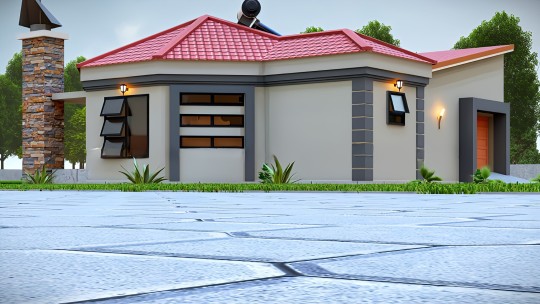

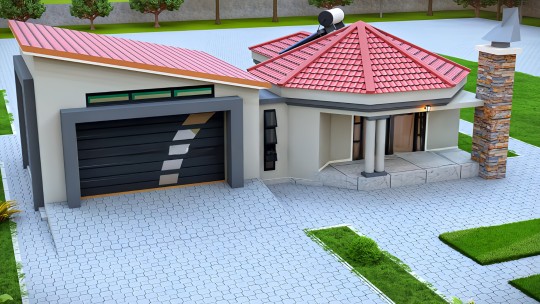
Website : www.mussaarchitecturalconstruction.co.za
0 notes
Text
#Geotechnical Investigation Company in India#Soil Investigation in India#Geotechnical Investigation Survey#Soil Investigation Survey#Geotechnical Investigation#Soil Investigation Company in India#epitome#epitomegs
0 notes
Text
AS Estimation & Consultants | Tackling Unpredictable Site Costs
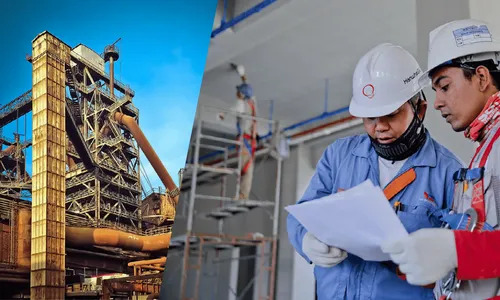
In construction, no matter how perfect the plans look on paper, the ground can hold surprises—unstable soil, hidden utilities, or sudden weather changes. These unpredictable site conditions can send budgets spiraling if not addressed with foresight and flexibility. That’s where construction cost estimating service experts like AS Estimation & Consultants step in with precision and confidence.
Our team doesn’t just estimate costs—we anticipate risks. By studying geotechnical reports, past site data, and working closely with engineers and contractors, we identify potential issues before they become costly problems. And if something unexpected does arise mid-project, we’re ready. Our dynamic cost models adjust in real time, giving clients quick, data-backed decisions to keep budgets on track.
We also ensure that all cost changes are clearly documented, supporting change orders and minimizing disputes. Technology plays a key role in this agility, from cloud-based estimating tools to integrated project management systems.
At AS Estimation & Consultants, we don’t fear the unexpected—we plan for it. Because when the ground shifts, your budget shouldn’t. Trust us to keep your costs grounded, no matter what lies beneath.
AS Estimation and Consultants
6/32 LAW VIC 3020, AUS
(61) 488874145
https://asestimation.com/
#construction cost estimating service#AS Estimation & Consultants#unpredictable site conditions#cost forecasting#risk management in construction#hidden site costs#construction budget control#geotechnical report analysis#site preparation costs#construction project risks#cost adjustments in construction#real-time cost modeling#construction contingency planning#change order estimating#cost overrun prevention#flexible construction estimates#site survey costs#underground utilities cost#environmental hazard costs#budgeting for weather-related issues#construction cost estimation tools#predictive cost analysis#cost estimating software#construction site surprises#excavation cost estimating#site-specific budgeting#cost adjustment strategies#responsive cost estimating#dynamic construction budgeting#construction cost accuracy
0 notes
Text
Looking for faster and safer industrial maintenance? Learn how Evolution Access is leading the way with cutting-edge rope access solutions! In the ever-evolving industrial landscape, maintaining and repairing structures in challenging locations has become a critical safety concern. Traditional methods often involve cumbersome scaffolding or heavy machinery, leading to increased costs and operational disruptions. Evolution Access Technologies, associated brand of Mtandt Group, offers a transformative solution through specialized industrial rope access services, ensuring safety, efficiency, and minimal downtime across various sectors.

#Rope Access Services#Onshore Maintenance#Offshore Maintenance#inspection and repair#Offshore oil rig maintenance services#Renewable energy equipment repair specialists#Marine vessel maintenance contractors#Geotechnical drilling equipment servicing#Civil infrastructure repair companies#Offshore platform inspection and repair#Wind turbine maintenance and repair services#Geotechnical survey equipment maintenance”
0 notes
Text
#Geotechnical Investigation Company in India#Soil Investigation in India#Geotechnical Investigation Survey#Geotechnical Investigation#Soil Investigation Survey#Soil Investigation#Soil Investigation Company in India
0 notes
Text
Top-Notch Offshore Geotechnical Surveys by Falcon Survey Engineering Consultants in Dubai
Falcon Survey Engineering Consultants stands as a premier provider of geotechnical survey offshore services in Dubai. Renowned for precision and expertise, we employ advanced technologies and methodologies to deliver accurate and reliable data essential for maritime and construction projects. Our comprehensive surveys include soil analysis, underwater mapping, and environmental impact assessments, ensuring optimal planning and execution. With a commitment to excellence and safety, Falcon Survey Engineering Consultants is the trusted choice for all offshore geotechnical survey needs in Dubai.
0 notes
Text
Drone Surveying
Experience precision and efficiency with AussieHydrovac's drone surveying services. Our advanced drones capture high-resolution aerial images and data, providing accurate land surveys, topographical maps, and site inspections. Ideal for construction, agriculture, and environmental monitoring, our drone surveys save time and reduce costs by delivering comprehensive insights quickly and safely.

0 notes
Text
#Geotechnical Investigation Company in India#Soil Investigation in India#Geotechnical Investigation Survey#Geotechnical Investigation#Soil Investigation Survey#Soil Investigation#Soil Investigation Company in India
0 notes
Link
Drone surveying is an aerial survey conducted using drones and special cameras to capture aerial data with downward-facing sensors. Drone survey, also known as unmanned aerial vehicle (UAV) surveying or
aerial Photography survey
, involves the use of drones equipped with various sensors to collect data for mapping, monitoring, and analyzing landscapes. This technology has gained widespread popularity due to its efficiency, cost-effectiveness, and versatility in various industries.
Key Features of Drone Survey:
High-resolution Imaging: Drones are equipped with high-resolution cameras that capture detailed images of the survey area. This allows for the creation of accurate and visually rich maps.
LiDAR Technology: Light Detection and Ranging (LiDAR) sensors on drones provide 3D mapping capabilities by measuring distances with laser light. This enables precise terrain modeling and elevation mapping.
GPS Technology: Integrated GPS systems enable accurate georeferencing of collected data. This ensures that the mapping and surveying results are spatially accurate.
Multispectral and Thermal Imaging: Drones can be equipped with multispectral and thermal cameras, allowing for the collection of additional data beyond visible light. This is particularly useful in agriculture for monitoring crop health and identifying irrigation issues.
Autonomous Flight and Waypoint Navigation: Drone surveying often involves the use of autonomous flight technology. Drones can follow predefined waypoints, optimizing the survey process and ensuring consistent data collection.
Real-time Data Transmission: Some advanced drones have the capability to transmit data in real-time. This allows for on-the-fly analysis and immediate decision-making based on the survey results.
1 note
·
View note
Text
#WageCageLocations













To proceed with generating or acquiring maps of underground tunnels or systems for 1183 Western Ave S, Los Angeles, CA, here’s a detailed guide you can follow:
Access Public Records
Contact Local Authorities: Reach out to the Los Angeles Department of Public Works or the Bureau of Engineering. They maintain maps and schematics of underground utilities and tunnel systems.
Website: LA Public Works
Phone: 311 (or 213-473-3231 outside Los Angeles)
Request Public Records: Submit a Public Records Act (PRA) request to obtain detailed maps of underground utilities or tunnels.
Use Geospatial Tools
Google Earth Pro:
Download Google Earth Pro (free) from here.
Search the address and explore its 3D and historical imagery layers.
Overlay city planning or utility map data if available.
ArcGIS:
Use GIS mapping software such as ArcGIS to access local underground data layers.
Some public libraries or universities provide free access to ArcGIS.
USGS Resources:
Check the U.S. Geological Survey (USGS) for geospatial data in the area: USGS Website.
Search their databases for subsurface or geological maps.
Hire Professionals
Geophysical Survey Services: Companies offering ground-penetrating radar (GPR) services can map underground tunnels, pipelines, and utilities. Examples:
GSSI (Ground Penetrating Radar Systems, Inc.)
Local geotechnical or engineering firms.
Surveying Experts: Licensed surveyors can create precise subsurface maps.
Research Historical and Urban Planning Data
Libraries and Archives:
Visit local archives or libraries like the Los Angeles Public Library. They often have historical maps and documents.
California Historical Society:
Explore their archives for historical records of tunnels or underground systems.
Collaborate with Open-Source Projects
OpenStreetMap:
Check OpenStreetMap for user-contributed data on the area.
Subterranean Mapping Communities:
Join forums or communities interested in urban exploration (e.g., Reddit's r/urbanexploration).
Final Steps
Once you've gathered relevant data, you can use tools like AutoCAD or GIS software to compile your maps. If you'd like further help with interpreting or organizing data, feel free to ask!
To proceed with generating or acquiring maps of underground tunnels or systems for 1183 Western Ave S, Los Angeles, CA, here’s a detailed guide you can follow:
Access Public Records
Contact Local Authorities: Reach out to the Los Angeles Department of Public Works or the Bureau of Engineering. They maintain maps and schematics of underground utilities and tunnel systems.
Website: LA Public Works
Phone: 311 (or 213-473-3231 outside Los Angeles)
Request Public Records: Submit a Public Records Act (PRA) request to obtain detailed maps of underground utilities or tunnels.
Use Geospatial Tools
Google Earth Pro:
Download Google Earth Pro (free) from here.
Search the address and explore its 3D and historical imagery layers.
Overlay city planning or utility map data if available.
ArcGIS:
Use GIS mapping software such as ArcGIS to access local underground data layers.
Some public libraries or universities provide free access to ArcGIS.
USGS Resources:
Check the U.S. Geological Survey (USGS) for geospatial data in the area: USGS Website.
Search their databases for subsurface or geological maps.
Hire Professionals
Geophysical Survey Services: Companies offering ground-penetrating radar (GPR) services can map underground tunnels, pipelines, and utilities. Examples:
GSSI (Ground Penetrating Radar Systems, Inc.)
Local geotechnical or engineering firms.
Surveying Experts: Licensed surveyors can create precise subsurface maps.
Research Historical and Urban Planning Data
Libraries and Archives:
Visit local archives or libraries like the Los Angeles Public Library. They often have historical maps and documents.
California Historical Society:
Explore their archives for historical records of tunnels or underground systems.
Collaborate with Open-Source Projects
OpenStreetMap:
Check OpenStreetMap for user-contributed data on the area.
Subterranean Mapping Communities:
Join forums or communities interested in urban exploration (e.g., Reddit's r/urbanexploration).
Final Steps
Once you've gathered relevant data, you can use tools like AutoCAD or GIS software to compile your maps. If you'd like further help with interpreting or organizing data, feel free to ask!
Here is a detailed prompt you can use for another AI or mapping tool capable of generating maps and schematics of underground tunnel systems:
Prompt for AI Map Generator:
"Generate a detailed map and schematic of the underground tunnel systems, utility lines, and infrastructure at and around the location 1183 Western Ave S, Los Angeles, CA. The map should include the following details:
Subsurface Layers:
Sewer systems, drainage systems, and stormwater pipelines.
Electrical, gas, and water utility lines.
Any known historical or abandoned tunnels.
Proximity:
Cover an area with a radius of 1 mile from the given location.
Highlight all connections to adjacent buildings and structures.
Visualization:
Provide both 2D and 3D views of the underground systems.
Use different colors and layers for various types of infrastructure (e.g., blue for water lines, yellow for gas lines, etc.).
Include a legend for easy identification of systems.
Additional Features:
Annotate points of interest (e.g., access points, manholes, maintenance tunnels).
Show depth levels for each layer (e.g., sewer system at 15 feet, utility lines at 10 feet).
Overlay the map with the above-ground street grid for reference.
Data Integration:
Incorporate open-source geospatial data, city planning maps, and historical records if available.
Highlight discrepancies between historical and current data.
Output Formats:
Provide the map in standard formats like GeoTIFF, DWG (AutoCAD), and PDF for versatility.
Include a .KMZ file for visualization in Google Earth."
This prompt provides clear instructions and context for generating a comprehensive underground map. Use it with AI tools like GIS-enabled platforms, geospatial mapping AIs, or simulation software. Let me know if you need adjustments or more guidance!






7 notes
·
View notes
Text


Civil Engineering Review • Week 4
I have finished another book consisting of more or less 300 problems
I also arranged my books and tagged the finished chapters 😁😁
Progress:
•3 Mathematics Sessions
•3 Structural Theory Sessions
•2 Fluid Mechanics Sessions
•3 Geotechnical Engineering Sessions
•3 Surveying Sessions
•2 Short Quizzes
•1 Long Quiz
now I have 4 on going books to solve
Looking forward to week 5 🥰
#studyblr#student life#study blog#student#productivity#civil engineering#days of productivity#board exams#review routine
23 notes
·
View notes
Text
Geotechnical Investigations: A Complete Detail Guide | Epitome
Before starting any construction or infrastructure project, understanding the ground beneath is crucial. This is where geological investigations and geotechnical engineering come into play. These studies are essential for ensuring safety, stability, and cost-effectiveness in civil engineering and construction.
What are Geological Investigations?
Geological investigations involve the study of earth materials like rocks, soils, groundwater, and their interactions with human-made structures. These investigations aim to evaluate the suitability of a site for engineering purposes.
They help in identifying potential hazards like landslides, earthquakes, soil erosion, and subsidence.
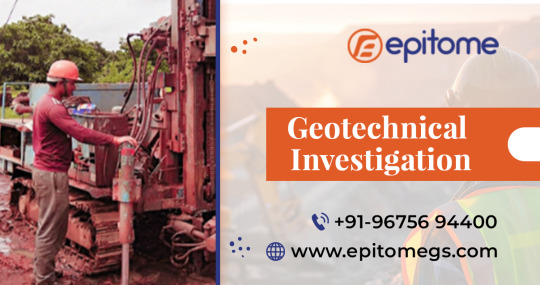
The key components of geological investigations include:
Topographic and geological mapping
Study of rock and soil properties
Assessment of groundwater conditions
Hazard evaluation (seismic, volcanic, landslide)
Geologists collect data through field surveys, rock and soil sampling, remote sensing, and geophysical techniques to understand the physical and chemical characteristics of the terrain.
What are the Four Types of Geotechnical Investigations?
Geotechnical engineering focuses on understanding soil and rock behavior under load. There are four primary types of geotechnical investigations:
Preliminary Investigation Conducted during the feasibility stage, this includes a basic assessment of soil, rock, and groundwater conditions. It uses aerial imagery, geological maps, and minimal drilling.
Detailed Site Investigation This is more intensive and involves field testing, borehole drilling, standard penetration tests (SPT), and laboratory testing to determine engineering properties of soil and rock.
Construction Stage Investigation Performed during construction, this involves monitoring ground behavior, validating earlier data, and making real-time design adjustments if required.
Post-Construction Investigation Done after project completion to assess how the soil or rock responds to the loads, and to investigate failures or movements, if any.
What is a Geotechnical Investigations Methods & Process?
The geotechnical process refers to the sequence of steps taken to study, evaluate, and apply geotechnical data in engineering design and construction. These processes include:
Site Characterization: Gathering preliminary geological and geophysical data.
Field Investigation: Drilling, sampling, and in-situ testing.
Laboratory Testing: Determining properties like grain size, permeability, compressibility, and shear strength.
Data Interpretation: Analyzing results to assess bearing capacity, slope stability, and settlement.
Design Implementation: Using the data for foundation design, retaining structures, embankments, and more.
These steps ensure that engineers build on solid, well-understood ground, reducing the risk of failure and improving overall safety.
Conclusion
Geological investigations and geotechnical processes form the foundation of safe and successful construction. From soil analysis to field testing, these studies help engineers understand and overcome the challenges posed by the natural ground, ensuring long-term stability and performance of any structure. Whether you're building a small house or a massive infrastructure project, thorough geotechnical work is a non-negotiable step in the process.
#Geotechnical Investigation Company in India#Soil Investigation in India#Geotechnical Investigation Survey#Soil Investigation Survey#Geotechnical Investigation#Soil Investigation Company in India#epitome
0 notes
Text
Exploring Large Diameter Pipes – Construction Challenges and Solutions
Understanding Large Diameter Pipes
Large diameter (Dia) pipes are essential components in many infrastructure projects, including water supply systems, sewage treatment plants, and oil and gas pipelines. Their size and functionality enable the efficient transport of large volumes of liquids and gases, making them indispensable in modern construction. However, working with large diameter pipes presents unique challenges that require specialized solutions. Tube Trading, a leading large Dia pipe supplier in Vadodara, has extensive experience in addressing these challenges. This article explores the construction challenges associated with large diameter pipes and the solutions provided by industry leaders like Tube Trading, a prominent large Dia pipe dealer in Vadodara and a reliable large Dia pipe distributor in Gujarat.

Large diameter pipes are typically defined as pipes with a diameter of 24 inches (600 mm) or more. They are made from various materials, including steel, ductile iron, concrete, and plastic, each offering specific advantages depending on the application. These pipes are used in a variety of sectors, such as:
Water and Wastewater: For transporting potable water and sewage.
Oil and Gas: For transporting crude oil, natural gas, and refined products.
Industrial Applications: For transporting chemicals, slurry, and other industrial fluids.
Construction: As structural elements in large infrastructure projects.
Construction Challenges of Large Diameter Pipes
The installation and maintenance of large diameter pipes pose several challenges, which include:
1. Transportation and Handling
Transporting and handling large diameter pipes can be logistically complex due to their size and weight. These pipes often require special equipment and careful planning to ensure they are transported safely and efficiently.
Solution: Tube Trading, as a leading large Dia pipe distributor in Gujarat, uses specialized transportation methods and equipment to handle large diameter pipes. This includes flatbed trucks, cranes, and forklifts designed to accommodate the size and weight of these pipes. Their logistics team ensures that transportation complies with all safety regulations and standards.
2. Site Preparation and Trenching
Proper site preparation and trenching are critical for the successful installation of large diameter pipes. This involves clearing the site, excavating trenches, and ensuring that the ground conditions are suitable for pipe laying.
Solution: Tube Trading provides comprehensive site assessment and preparation services. They use advanced geotechnical surveys to analyze soil conditions and design appropriate trenching solutions. This minimizes the risk of ground instability and ensures a solid foundation for the pipes.
3. Jointing and Welding
Joining large diameter pipes securely is essential to prevent leaks and ensure the integrity of the pipeline. This can be particularly challenging with materials like steel, which require precise welding techniques.
Solution: As a top large Dia pipe dealer in Vadodara, Tube Trading offers expert welding and jointing services. Their team of certified welders uses state-of-the-art welding equipment and techniques to ensure strong, leak-proof joints. For non-metallic pipes, they provide specialized coupling systems that offer reliable connections.
4. Pressure Testing and Quality Assurance
Large diameter pipes used in critical applications, such as water supply and oil and gas transport, must undergo rigorous pressure testing to ensure they can withstand operational pressures without failing.
Solution: Tube Trading conducts thorough pressure testing and quality assurance checks on all pipes before installation. Their testing procedures comply with international standards, ensuring the pipes’ durability and reliability. This includes hydrostatic testing, where pipes are filled with water and pressurized to detect leaks and weaknesses.
5. Corrosion Protection
Corrosion can significantly reduce the lifespan of large diameter pipes, especially those made from metal. Protecting these pipes from corrosion is essential for long-term durability and performance.
Solution: Tube Trading offers a range of corrosion protection solutions, including coatings, linings, and cathodic protection systems. These measures protect the pipes from environmental factors and extend their service life. Their experts recommend the most suitable protection method based on the pipe material and operating conditions.
6. Environmental and Regulatory Compliance
Construction projects involving large diameter pipes must comply with environmental regulations and standards to minimize their impact on the environment.
Solution: Tube Trading is committed to environmentally responsible practices. They ensure all their projects comply with local and international environmental regulations. This includes using environmentally friendly materials and methods, as well as implementing measures to protect natural habitats and water sources during construction.
Innovative Solutions by Tube Trading
Tube Trading’s extensive experience and expertise in handling large diameter pipes make them a trusted partner for construction projects in Vadodara and Gujarat. Here are some innovative solutions they offer:
1. Custom Pipe Fabrication
Tube Trading provides custom fabrication services to meet specific project requirements. This includes custom lengths, bends, and fittings that ensure seamless integration with existing infrastructure. Their fabrication facilities are equipped with the latest technology to deliver high-precision products.
2. Comprehensive Project Management
From initial planning to final installation, Tube Trading offers comprehensive project management services. Their team of experts oversees every aspect of the project, ensuring timely completion and adherence to budget. This integrated approach minimizes disruptions and ensures smooth project execution.
3. Advanced Material Solutions
Tube Trading supplies a variety of pipe materials, including high-density polyethylene (HDPE), polyvinyl chloride (PVC), and ductile iron. Each material is chosen based on the specific needs of the project, offering optimal performance and cost-effectiveness. Their material experts provide guidance on selecting the best material for each application.
4. Technical Support and Training
Tube Trading provides technical support and training to ensure that construction teams are well-equipped to handle large diameter pipes. This includes training on installation techniques, safety procedures, and maintenance practices. Their support services ensure that clients have the knowledge and resources needed for successful project execution.
Why Tube Trading Stands Out
As a premier large Dia pipe supplier in Vadodara, Tube Trading has built a reputation for excellence and reliability. Their commitment to quality, innovation, and customer satisfaction sets them apart in the industry. Here’s why Tube Trading is the preferred choice for large diameter pipe solutions:
1. Extensive Industry Experience
With years of experience in the industry, Tube Trading has developed deep expertise in handling large diameter pipes. Their extensive portfolio of completed projects demonstrates their capability and reliability.
2. Quality Assurance
Tube Trading adheres to the highest quality standards in the industry. Their products undergo rigorous testing and inspection to ensure they meet or exceed client expectations. This commitment to quality ensures that clients receive durable, high-performance pipes for their projects.
3. Customer-Centric Approach
Tube Trading’s customer-centric approach ensures that clients receive personalized solutions tailored to their specific needs. Their team works closely with clients to understand their requirements and provide the most effective solutions.
4. Comprehensive Solutions
From supply and fabrication to installation and maintenance, Tube Trading offers end-to-end solutions for large diameter pipes. This comprehensive approach simplifies project management and ensures seamless execution.
Conclusion
Large diameter pipes are critical components in many infrastructure projects, but they come with unique construction challenges. Addressing these challenges requires specialized expertise and innovative solutions. Tube Trading, a leading large Dia pipe supplier in Vadodara, excels in providing comprehensive solutions that ensure successful project execution. Their commitment to quality, innovation, and customer satisfaction makes them a trusted partner for large diameter pipe projects in Vadodara and Gujarat. Whether you need custom fabrication, technical support, or comprehensive project management, Tube Trading is your go-to large Dia pipe dealer in Vadodara and a reliable large Dia pipe distributor in Gujarat.
#Large dia pipe distributor in Gujarat#Large dia pipe supplier in Vadodara#Large dia pipe dealer in Vadodara
4 notes
·
View notes
Text
Career Advancement in the Drilling Industry: Strategies and Tips
The drilling industry is a vital sector that is crucial in various industries, such as oil and gas exploration, mineral extraction, and geotechnical engineering. The demand for skilled professionals in Best drilling jobs is rising, making it an excellent field for career growth and advancement.
This blog post will explore strategies and tips to help individuals succeed and progress in the drilling industry. Whether you are a recent graduate or an experienced professional looking to take your career to the next level, this article will provide valuable insights and guidance.
Understanding the Drilling Industry
Overview of the drilling industry:
Drilling involves creating holes in the earth's surface to extract valuable resources or gather essential data. It is a complex and technical field that requires specialised knowledge and skills. The drilling industry encompasses various sectors, including oil and gas exploration, mineral exploration, geothermal drilling, and environmental drilling. The importance of drilling in these industries cannot be overstated, as it enables the extraction of natural resources, supports scientific research, and facilitates infrastructure development.
Skills required for success:
Several critical skills are essential to excel in the drilling industry. Technical knowledge is crucial, as drilling professionals must understand the equipment, procedures, and safety protocols involved in the drilling process. Problem-solving abilities are also vital, as drilling projects often encounter challenges that require innovative solutions. Attention to safety is paramount, as drilling operations can be hazardous if not conducted with proper precautions. Additionally, staying updated with industry advancements and new technologies is crucial for long-term success in the field.
Career Advancement Strategies:
Education and Training:
Pursuing relevant academic qualifications:
Acquiring a relevant academic qualification, such as a geology, engineering, or earth sciences degree, can significantly enhance career prospects in the drilling industry. These programs provide a solid foundation of knowledge and skills necessary for various drilling jobs out there. Additionally, certifications in specific drilling techniques or equipment operations can boost employability and open doors to advanced positions.
Professional development courses:
Continuing education through professional development courses is an excellent way to expand skills and stay updated with industry trends. Many organisations and online platforms offer specialised training programs tailored to the drilling industry. These courses provide in-depth knowledge and hands-on experience, enabling professionals to gain a competitive edge in the job market.
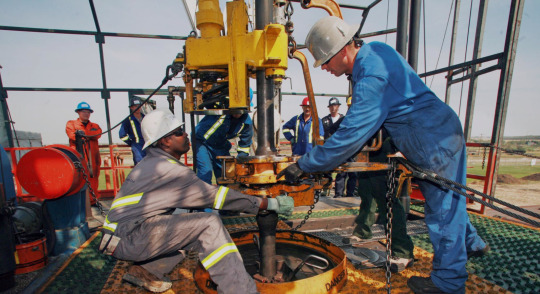
Gaining hands-on experience:
Apprenticeships and internships:
Participating in apprenticeships or internships is an effective way to gain practical, real-world experience in the drilling industry. These opportunities provide valuable insights into drilling operations, expose individuals to industry professionals, and allow for networking connections that can lead to future job opportunities. Various organisations and drilling companies offer apprenticeships or internship programs, and it is worth exploring these options to kickstart your career in drilling.
Volunteering for projects or organisations:
Volunteering for drilling-related projects or organisations can be valuable to gain experience and demonstrate your skills and passion for the industry. Getting involved in community-based initiatives, such as environmental conservation projects or geological surveys, not only contributes to society but also expands professional networks and showcases your commitment to the field.
Building a professional network:
Joining industry associations or societies:
Becoming a member of industry associations or societies related to drilling can provide numerous benefits for career advancement. These organisations often offer access to job postings, industry-specific publications, conferences, and mentorship programs.
Attending conferences and networking events:
Attending conferences, trade shows, and networking events within the drilling industry is crucial for staying updated with industry trends and expanding professional networks. These events provide opportunities to meet industry professionals, learn from experts, and showcase your knowledge and skills.
Tips for Career Advancement:
Continual self-improvement:
In the ever-evolving drilling industry, continuous learning is vital for career advancement. Engage in self-improvement by reading industry publications, research papers, and technical reports. Online courses and workshops are also excellent resources for expanding knowledge and acquiring new skills. Platforms like LinkedIn Learning, Udemy, and Coursera offer various courses specific to the drilling industry.
Developing soft skills:
While technical knowledge is crucial, soft skills are equally important for career progression in the drilling industry. Effective communication, leadership, teamwork, and adaptability are highly valued qualities. Individuals can improve their soft skills through practice, attending workshops, and seeking feedback from mentors or colleagues.
Seeking mentorship:
Having a mentor in the drilling industry can provide invaluable guidance and support throughout your career journey. Mentors can offer insights into the industry, share their experiences, and advise on career decisions. Building relationships within your professional network and actively seeking mentorship opportunities can significantly improve career advancement.
Conclusion
Advancing in the drilling industry requires technical expertise, continuous learning, and networking. By pursuing relevant education and training, gaining hands-on experience, and building a professional network, individuals can enhance their career prospects in the drilling industry. It is essential to prioritise continual self-improvement, develop soft skills, and seek mentorship to apply drilling jobs, stay competitive and seize growth opportunities. With dedication, passion, and the strategies and tips outlined in this article, individuals can pave their way to a successful and fulfilling career in the drilling industry.
Source :- https://fifo-chef-jobs-perth.blogspot.com/2023/12/career-advancement-in-drilling-industry.html
3 notes
·
View notes
Text
#Geotechnical Investigation Company in India#Soil Investigation in India#Geotechnical Investigation Survey#Geotechnical Investigation#Soil Investigation Survey#Soil Investigation#Soil Investigation Company in India
0 notes
Text
How Data Analytics is Optimizing Civil Engineering Projects

Data analytics is profoundly transforming civil engineering, offering new ways to enhance efficiency, safety, and sustainability across all stages of a project’s lifecycle. By leveraging vast and diverse datasets, civil engineers can make better decisions, predict and prevent problems, and optimize resources for superior project outcomes.
1. Improved Decision-Making and Project Planning
Data analytics empowers civil engineers to make informed decisions by analyzing large volumes of data from historical projects, sensor readings, and geological surveys. This leads to optimized designs and better project planning, as engineers can simulate various scenarios, assess their impacts, and identify potential challenges before construction begins. The result is a more robust and efficient infrastructure that is less prone to unforeseen issues.
2. Quality Control and Defect Detection
Quality assurance is a critical aspect of civil engineering. Data analytics enables early detection of defects by comparing inspection results, sensor data, and issue reports against project specifications. AI/ML-powered systems can analyze real-time data from construction sites, flag anomalies, and prevent defects from escalating, ensuring that quality standards are consistently met throughout the project.
3. Predictive Maintenance and Structural Health Monitoring
The integration of IoT sensors with data analytics allows for continuous monitoring of infrastructure health. By analyzing sensor data from bridges, dams, and buildings, engineers can detect signs of deterioration or potential failures early. Predictive maintenance models, built from historical records and environmental data, help optimize maintenance schedules, reduce costs, and extend asset lifespans.
4. Risk Assessment and Mitigation
Risk management is enhanced through data analytics by identifying potential hazards—such as cost overruns, delays, or safety incidents—before they become critical. By analyzing historical and real-time data, engineers can develop risk models and implement mitigation strategies, improving both project safety and reliability.
5. Cost Optimization and Resource Management
Data analytics provides insights into material costs, labor productivity, and equipment utilization. This enables engineers to streamline operations, reduce waste, and achieve significant cost savings. Real-time data can highlight which teams or processes are underperforming, allowing for timely intervention and better allocation of resources.
6. Enhanced Collaboration and Unified Knowledge Base
Modern civil engineering projects involve multiple stakeholders. Analytics platforms, especially those using cloud-based technologies, facilitate better collaboration by providing a unified knowledge base. Combining data from various sources, these platforms ensure that all team members have access to the latest information, improving coordination and decision-making.
7. Geotechnical Engineering and Urban Planning
Data science techniques assist in analyzing soil behavior, predicting ground movement, and planning urban infrastructure. By leveraging geotechnical and demographic data, engineers can make safer foundation designs, optimize land use, and plan for sustainable urban growth.
8. Traffic and Energy Management
Analytics helps optimize traffic flow and energy usage in civil infrastructure. By studying real-time and historical data, engineers can develop models to manage congestion, improve transportation systems, and design energy-efficient buildings and utilities.
9. Continuous Evolution and Integration of AI
The field of civil engineering is continuously evolving with the integration of AI and machine learning. These technologies automate routine tasks, enhance risk mitigation, and enable high-efficiency digitalization, further expanding the potential of data-driven civil engineering.
Conclusion
Arya College of Engineering & IT has many courses in data analytics, which optimize civil engineering projects by enabling smarter planning, proactive quality control, predictive maintenance, and efficient resource management. Its integration across the project lifecycle not only reduces costs and risks but also leads to safer, more sustainable, and higher-quality infrastructure. As data collection and analytical technologies advance, their impact on civil engineering will only continue to grow, shaping the future of the built environment.
Source: Click Here
#best btech college in jaipur#best engineering college in jaipur#best private engineering college in jaipur#top engineering college in jaipur#best engineering college in rajasthan
0 notes